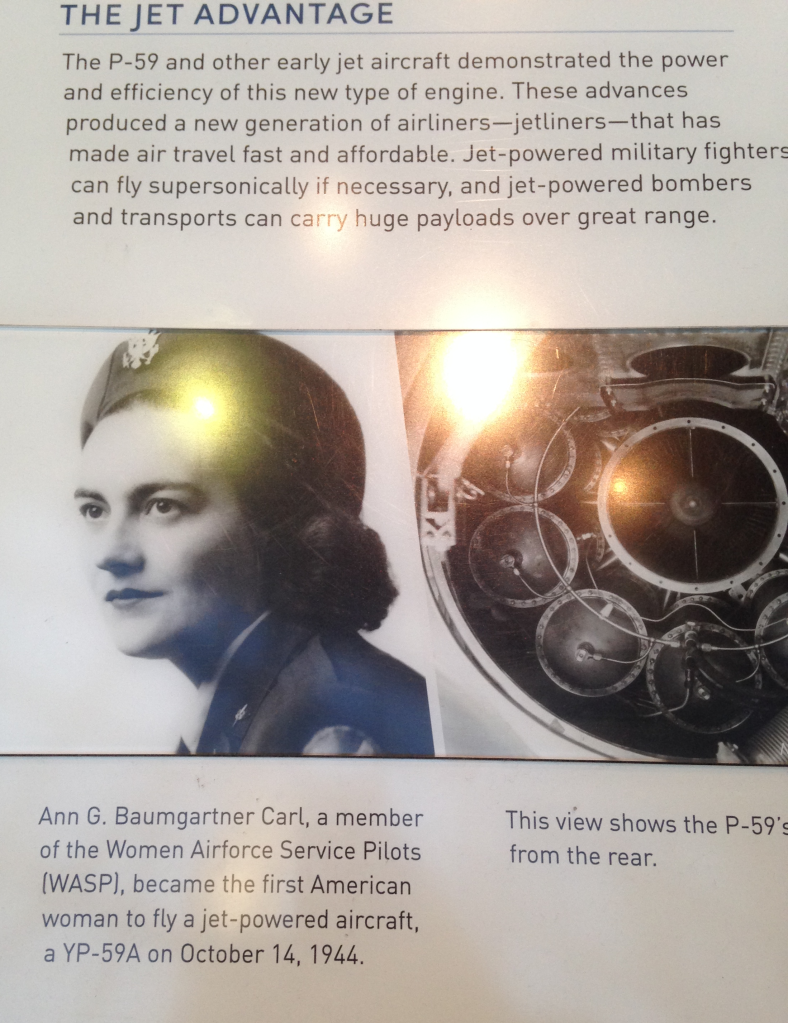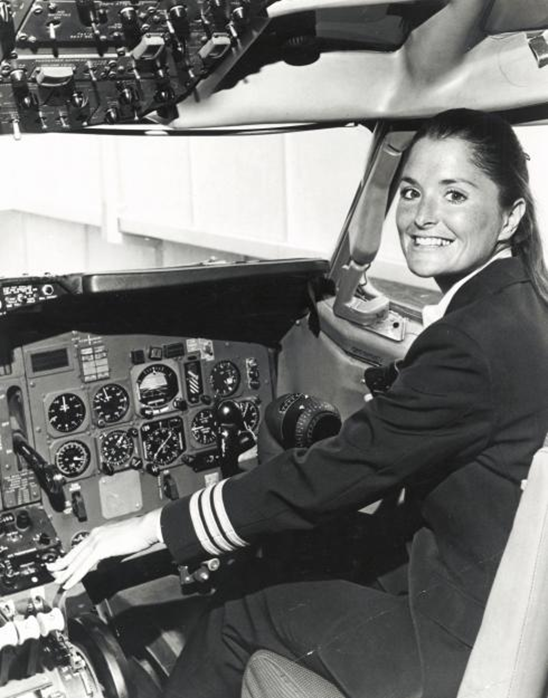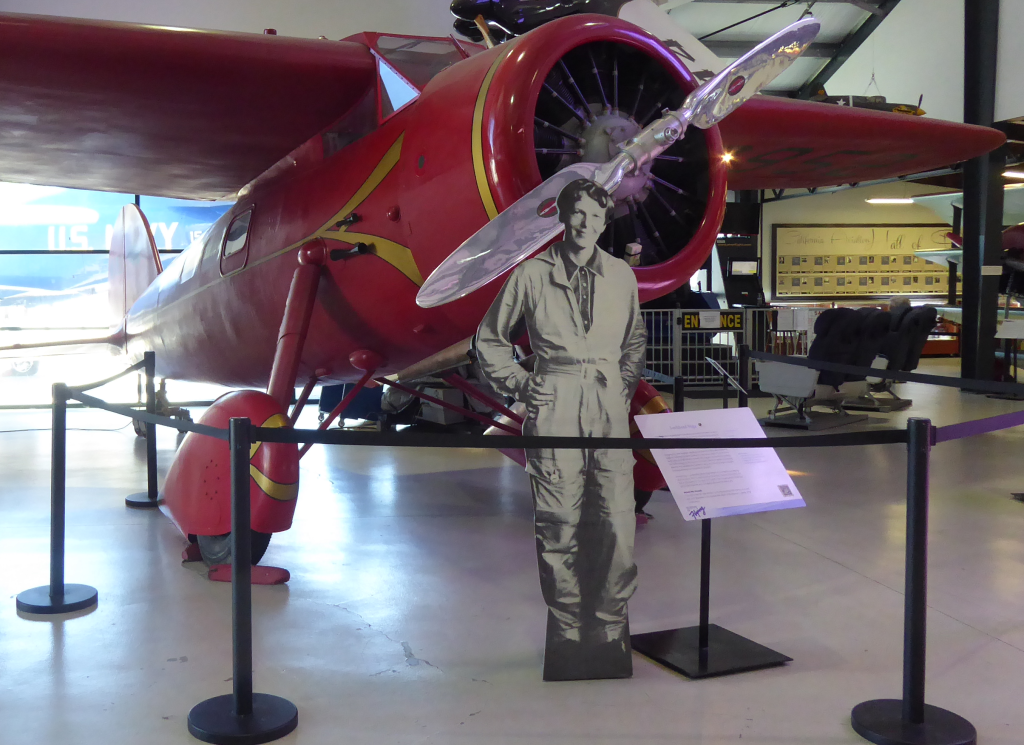
See : Jessica Cox – The world’s first licensed Armless Pilot.

See : Jessica Cox – The world’s first licensed Armless Pilot.
Born in 1961 in Nassau, The Bahamas, Patrice Clark-Washington, was the first black woman captain of a major U.S. air service. Her interest in aviation began at the young age of five when she took her first flight. She participated in career week activities in high school hoping to become a flight stewardess, but by the time she graduated she had hopes of becoming a pilot. She attended Embry-Riddle Aeronautical University in Daytona Beach, and graduated with a commercial pilot’s certificate and B.S. in aeronautical science in 1982.

She worked as a pilot for a charter company, Trans Island Airways, in the Bahamas between 1982 and 1984. She later flew as a first officer with Bahamasair and in 1988 she was hired as a flight engineer for United Parcel Service (UPS). She was promoted to first officer in 1990 and finally to captain in1994. She was only one of eleven female captains to command planes for a major U.S. airline.
Her husband Ray Washington flies for American Airlines. She and her husband are the only African American couple who both fly for a major commercial carrier.
Some of her major accomplishments include:
Patrice Clarke-Washington has retired from the public eye. In 2008, along with her husband Ray, she was recognized as an inaugural Founders and Pioneers Hall of Fame inductee by the Organization of Black Aerospace Professionals. Her UPS uniform is on display at the National Air and Space Museum in Washington, D.C.
March is Women History Month and Women of Aviation Month.
See Also:

Born in August 1948 in Connecticut, Bonnie Linda Tiburzi, became the first female pilot for American Airlines at the young age of 24 years. Her father was an airline pilot who flew for the Scandinavian Airlines and later for Trans World Airlines, and owned and operated a flight school after leaving the airlines. Likely inspired by her father, her first job was as a flight instructor and charter pilot.

At 24, she became the first female pilot for American Airlines and the first female pilot for a major American commercial airline. She started out as a Flight Engineer at American and later flew as a Captain on the Boeing 727, Boeing 757 and the Boeing 767. After 26 years in the aviation industry, she retired from aviation in 1998.
Bonni Tiburzi Caputo wrote her autobiography Takeoff: The Story of America’s First Woman Pilot for a Major Airline in 1976. She received several awards throughout her career. Her American Airlines pilot uniform is on display at the Smithsonian’s National Air and Space Museum in Washington, D.C.
March is Women History Month and Women of Aviation Month.
See Also:

Born in October 1939 in Denver, Colorado, Emily Howell Warner was an American pilot and the first woman captain of a scheduled U.S. airline. She fell in love with flying when at age eighteen she flew on flight to Gunnison. Three days after that flight, she met James E. Muncey, the Chief Pilot at Clinton Aviation, and by February 18, 1958, she had her student pilot’s license in hand and by the age of 21 she had her pilot’s license. She went on to get her commercial, instrument, multi-engine and flight instructor ratings. Over the course of 15 years to accumulated 7000 hours.

She was hired by Frontier Airlines in 1973 and flew with them till they closed in 1986. She then flew for Continental and as a captain for UPS on the Boeing 737 from 1988 to 1990. The last decade of her career, she worked as an air carrier inspector, Aircrew Program Manager with the Federal Aviation Administration (FAA) in Denver.
Some of her achievements include:
She retired in 2002 with 42 years in aviation and over 21,000 hours of flight time. Her career is recognized at the National Aviation Hall of Fame and National Women’s Hall of Fame and her pilot’s uniform is on display at the Smithsonian’s National Air and Space Museum.
She passed away in 2020 due to complications of a fall and Alzheimer’s disease.
March is Women History Month and Women of Aviation Month.
See Also:
Born in 1877 in Indiana, aviation pioneer Matilde Moisant became the second woman to receive a pilot’s license certified by the Aero Club of America. The first woman was her friend Harriet Quimby.

Her brothers were aviators and Moisant learned to fly at her brothers’ flight school – Moisant Aviation School – in Long Island, NY. She earned her pilot license on August 17, 1911, just a couple of weeks after her friend Harriet Quimby did. She was the 9th woman in the world to earn a pilot license. For one brilliant year in the early 1900s, these pioneering aviatrixes streaked across the sky together, becoming national heroes and media darlings—until tragedy grounded them permanently.
Moisant pursued a career in exhibition flying and some noteworthy events during her flying adventures include:
After a serious crash in 1912, Moisant stopped flying, even though she recovered from her injuries. She volunteered in France with the Red Cross during World War I.
She died in 1964 at the age of 85 in Glendale, CA.
March is Women History Month and Woman of Aviation Month.
See Also:



You must be logged in to post a comment.